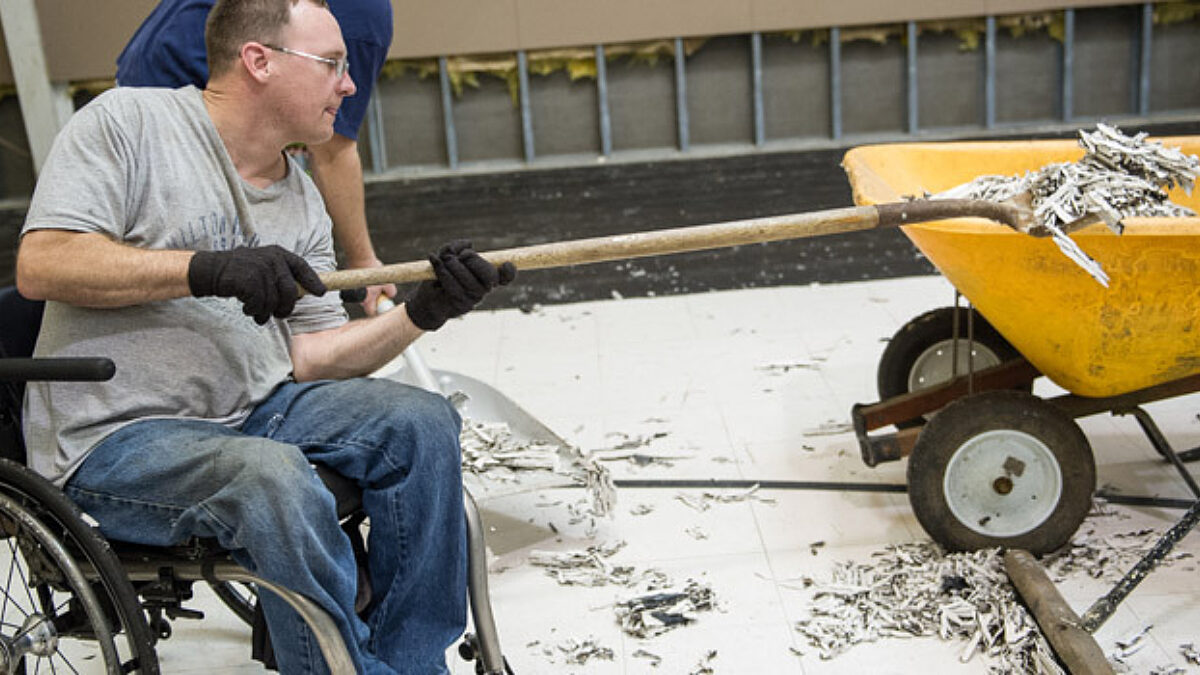
Housing for teams tops list of flood needs
By Jessica Brodie
Nearly four months after the South Carolina flood, the conference’s disaster recovery team is settling into a new reality—one steeped largely in outreach, needs assessment and a massive web of disaster coordination across the state.
It’s a lot of work, said Disaster Response Coordinator the Rev. Gregg Varner, who with his team is knee-deep in reaching out to people in need and matching them with teams who can help. The October storms left many displaced and billions of dollars in damage to homes, roads, dams, businesses and more. Nearly half of the state’s 46 counties were declared disaster areas by the Federal Emergency Management Agency. Varner estimates the United Methodist rebuild/repair phase will last two to four years, possibly more, and they have already taken steps to staff up and orchestrate the response.
In addition to hiring Varner as full-time temporary disaster response coordinator, the conference has hired three others—Chelsey Faircloth as volunteer coordinator and Ward Smith and Ken Phelps as construction site supervisors—and are about to bring on one more construction site supervisor and a team of case managers to oversee the work. The early response phase of the work ended in late fall, and right now the disaster recovery team is focused on scheduling teams, securing permits and overseeing work on homes from the Lowcountry to the Midlands. Needs are tremendous, Varner said, and just because four months have passed does not mean the needs have diminished. If anything, they have increased.
“Even if we’re not affected and life has returned to normal for us, we need to remember there are people out there who are still not living in their homes,” Varner said, encouraging people to keep their affected brothers and sisters in prayer and not forget about them in our rush to get back to the status quo.
The disaster recovery team also needs churches to house teams, contractors willing to help with permitting, funds to ensure work continues and skilled volunteers for the repair/rebuild teams.
They hope to repair as many as 300-500 homes over the two- to four-year recovery period, Varner said.
Churches needed to house teams
At the top of their list of needs: churches that will step up and provide housing for repair and rebuild teams, many coming from out of state to lend their assistance.
“We need more churches who will house these teams,” Varner said. “The more churches that step up, the more people can be helped—and the more churches don’t get overwhelmed throughout the recovery phase.”
He said many churches have been extremely generous about housing Early Response Teams, which did muck-out and other first-phase assessment immediately after the flood, and the initial repair/rebuild teams, but he is concerned that if no other churches volunteer their facilities, these churches will eventually start saying “no” when asked to house teams.
If more churches help with housing, then they can rotate stays at churches around the area, and no one church gets too much of the burden, Varner said.
“Without housing, it makes it extremely difficult to schedule and bring teams in,” he said.
Repair teams do mostly interior work on homes damaged by the storm, such as repairing floors, sheetrock, cabinetry and insulation.
Churches need to provide facilities with a kitchen, toilet and a place to sleep and access to showers, even if that access is a nearby parsonage.
Specific areas include:
- Columbia/Richland/Lexington
- Sumter/Lee/Clarendon
- Berkeley/Charleston/Dorchester/Colleton
- Florence/Marion/Williamsburg/Horry/Georgetown
Churches willing to help with housing should contact Chelsey Faircloth at [email protected] or 803-786-9486, ext. 257.
Contractors and permits
Varner said the disaster recovery team might also need local licensed contractors in the above areas to help in acquisition of building permits, which can be difficult because of the magnitude of the flood and the number of people affected.
Varner invites local contractors who can help with the permitting process to contact him at [email protected]m or 803-786-9486.
Ongoing donations needed
While Varner said the conference has received grants from both the United Methodist Committee on Relief and the One SC Flood Relief Fund, plus many donations from churches and individuals across the state and nation, assistance is still very much needed.
“The more money we get, the more people we can help,” Varner said.
Conference Treasurer Beth Westbury said we have received $370,726 from a variety of sources (individuals, churches, other conferences, businesses, etc.). This does not include $20,000 from UMCOR as an emergency grant received immediately after the floods. The $150,000 grant from One SC will be used to help restore flooded residences. We are also in the process of finalizing an UMCOR grant for $1 million to be used over two years to provide qualified personnel to lead the rebuilding and recovery efforts; we have received a $100,000 installment from UMCOR from this grant.
People can give securely online at www.umcsc.org/data/disasterresponseflood2015.php or by mailing a check payable to South Carolina Conference of the UMC, South Carolina Disaster Response, P.O. Box 3787, Columbia, SC 29230.
Volunteers
Trained teams are needed to repair homes across the state. Team leaders must be trained through United Methodist Volunteers in Mission and can build a team through the official UMVIM process. If you are a team leader and would like to register your team with UMC Disaster Recovery to assist with the rebuilding of homes and churches, contact Chelsey Faircloth at [email protected] or 803-786-9486.
For more information: www.umcsc.org/screcovery.